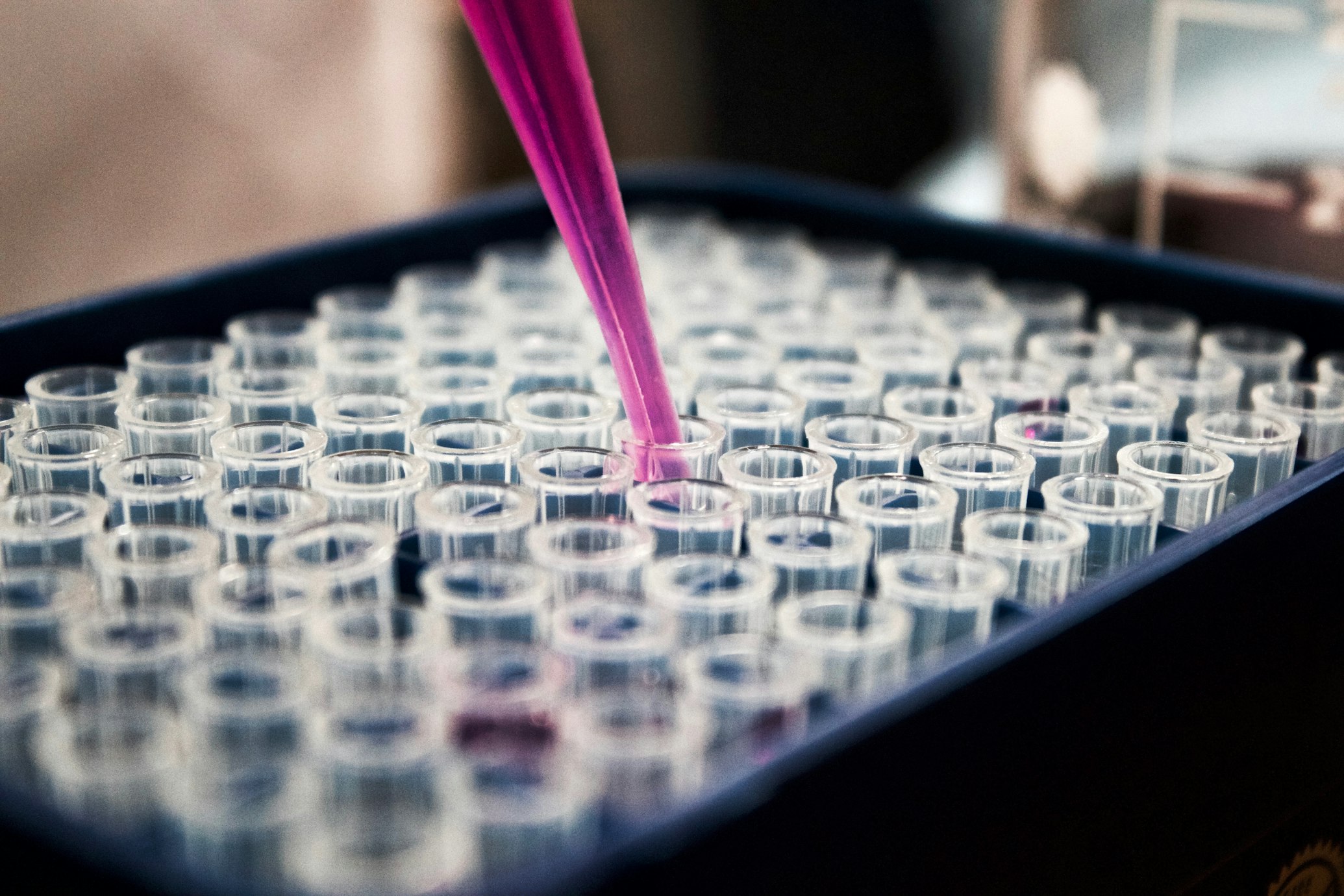The Invisible Architects
Mastering Nanostructure Engineering on Semiconductor Surfaces
Where surfaces become landscapes and atoms become tools, a new generation of scientists is reshaping our technological future, one nanometer at a time.
Navigation
The quest to master matter at its most fundamental level began with physicist Richard Feynman's prophetic 1959 declaration: "There's plenty of room at the bottom." Today, specialists wielding electron beams and molecular precursors are proving him right, engineering semiconductor surfaces with atomic precision to create nanostructures that power everything from quantum computers to cancer-detecting biosensors. The fusion of surface science, quantum physics, and precision engineering has birthed a new professional frontier: the nanostructure architect who manipulates semiconductor surfaces to create tomorrow's technologies 2 5 .
The Quantum Playground: Why Surfaces Matter
At the heart of semiconductor innovation lies a paradox: while bulk materials behave predictably, their surfaces become wild frontiers when shrunk to nanoscale dimensions. This occurs through two transformative phenomena:
Quantum Confinement
When semiconductor particles like cadmium selenide (CdSe) or zinc oxide (ZnO) shrink below 10nm, electrons become trapped within dimensions smaller than their natural wavelength. This dramatically alters optical and electronic properties—changing a material's color, conductivity, and reactivity based solely on size 7 . A 3nm CdSe quantum dot emits green light, while a 6nm dot glows red, enabling ultra-precise biomedical imaging 6 .
Surface Charge Dominance
At nanoscale, up to 50% of atoms reside on the surface, turning minor imperfections into major property-altering features. A 2024 breakthrough revealed that UV light could cleave citrate ligands from ZnO nanoparticles, instantly flipping their charge from negative to positive. This enabled electrostatic self-assembly into multilayered circuits—a process impossible in bulk materials 3 .
How Nanoscale Transformations Alter Semiconductor Behavior
| Property | Bulk Semiconductor | Nanostructured Surface | Technological Impact |
|---|---|---|---|
| Electron Behavior | Continuous energy bands | Quantized energy levels | Enables quantum computing |
| Surface-to-Volume Ratio | <5% atoms at surface | 30-50% atoms at surface | Enhances catalytic efficiency 10x 5 |
| Defect Impact | Localized effects | System-altering changes | Demands atomic precision |
| Light Interaction | Fixed bandgap | Tunable absorption/emission | Creates display quantum dots 6 |
The Light-Patterning Revolution: A Case Study in Precision
A landmark 2024 Nature Communications study exemplifies the sophisticated techniques modern specialists employ. Researchers achieved unprecedented control over semiconductor nanoparticle assembly using only low-intensity UV light and electrostatic forces—bypassing the need for expensive lithography 3 .
Methodology: Painting with Charged Particles
- Substrate Preparation: A silicon wafer is coated with negatively charged polymers.
- Nanoparticle Engineering: 600nm ZnO particles are functionalized with citrate ligands (ZnO@Cit), giving them a negative surface charge.
- Precision Deposition: ZnO@Cit suspension is applied to the substrate, where mutual repulsion prevents adhesion.
- Light-Guided Assembly: A UV lamp (6 mW/cm²) illuminates through a photomask, cleaving citrate ligands in exposed areas.
- Charge-Driven Assembly: Newly positive ZnO particles bond to the negative substrate via electrostatic attraction. Non-irradiated particles rinse away.
- Multilayer Construction: Released Zn²⺠ions form COO-Zn bonds between layers, enabling 3D stacking 3 .
Breakthrough Results
The technique achieved pattern resolutions under 500nm using UV intensities 100,000x lower than optical tweezers. Crucially, it enabled multilayer structures impossible with conventional methods. When fashioned into UV detectors, these nanostructures exhibited an extraordinary on/off current ratio exceeding 10â´â€”making them 100x more responsive than previous nanoparticle detectors 3 .
| Parameter | Traditional Lithography | Light-Patterning Technique | Advantage |
|---|---|---|---|
| Minimum Feature Size | ~200nm | <500nm | Comparable resolution |
| Energy Input | High-intensity lasers (10â¹ mW/cm²) | UV lamp (6 mW/cm²) | 10âµÃ— energy reduction |
| Process Time | Hours (multi-step) | <2 minutes | 50× faster |
| Multilayer Capacity | Limited | Excellent | Enables 3D circuits |
| Substrate Compatibility | Rigid only | Glass, PVC, flexible polymers | Wearable tech ready |
The Scientist's Toolkit: Essential Reagents for Surface Innovation
Mastering semiconductor nanostructures requires specialized materials that behave predictably at atomic scales. Key reagents from cutting-edge research include:
Core Nanofabrication Reagents
| Reagent/Material | Function |
|---|---|
| Citrate-treated ZnO nanoparticles | Charge-switchable building blocks 3 |
| Dielectric h-BN dispersant | Enhances NMR sensitivity 10x 4 |
| Cadmium Selenide (CdSe) QDs | Size-tunable quantum dots 7 |
| III-V semiconductors (GaAs) | High electron mobility materials 7 |
| Azide-functionalized ligands | Photoactive crosslinkers 3 |

Cultivating Professional Competence: The Modern Nanospecialist
Creating reliable nanostructures demands more than technical skill—it requires a fusion of disciplines:
Precision Engineering Mindset
With 2nm surface defects capable of ruining quantum dot arrays, specialists adopt semiconductor cleanroom protocols. This includes vibration-resistant workstations, sub-micron alignment systems, and atomic-layer deposition tools that add material one monolayer at a time 5 .
Advanced Characterization Mastery
Leading labs employ techniques like Dynamic Nuclear Polarization Surface Enhanced NMR Spectroscopy (DNP SENS) with h-BN dispersants. This reveals atomic connectivity at nanoparticle surfaces—critical when a single misplaced atom can alter electronic behavior 4 .
Real-World Impact: Where Surface Innovations Emerge
The Road Ahead: Challenges and Horizons
Despite breakthroughs, significant hurdles remain. Scaling light-patterning requires solving nanoparticle batch inconsistencies—a challenge addressed at institutions like Pacific Northwest National Laboratory (PNNL), where in situ electron microscopy tracks growth mechanisms in real-time 5 . Future specialists will leverage machine learning to predict nanostructure behavior, accelerating the design of quantum dots for brain-implantable sensors or photocatalytic coatings that scrub CO₂ from the atmosphere.
"Advanced nanotechnology could build almost anything."
As we stand at the threshold of atomic-scale manufacturing, the words of nanotechnology pioneer Eric Drexler resonate. The specialists mastering semiconductor surfaces aren't just observers of this revolution—they're its architects, manipulating the quantum realm to create the once-impossible 2 .


